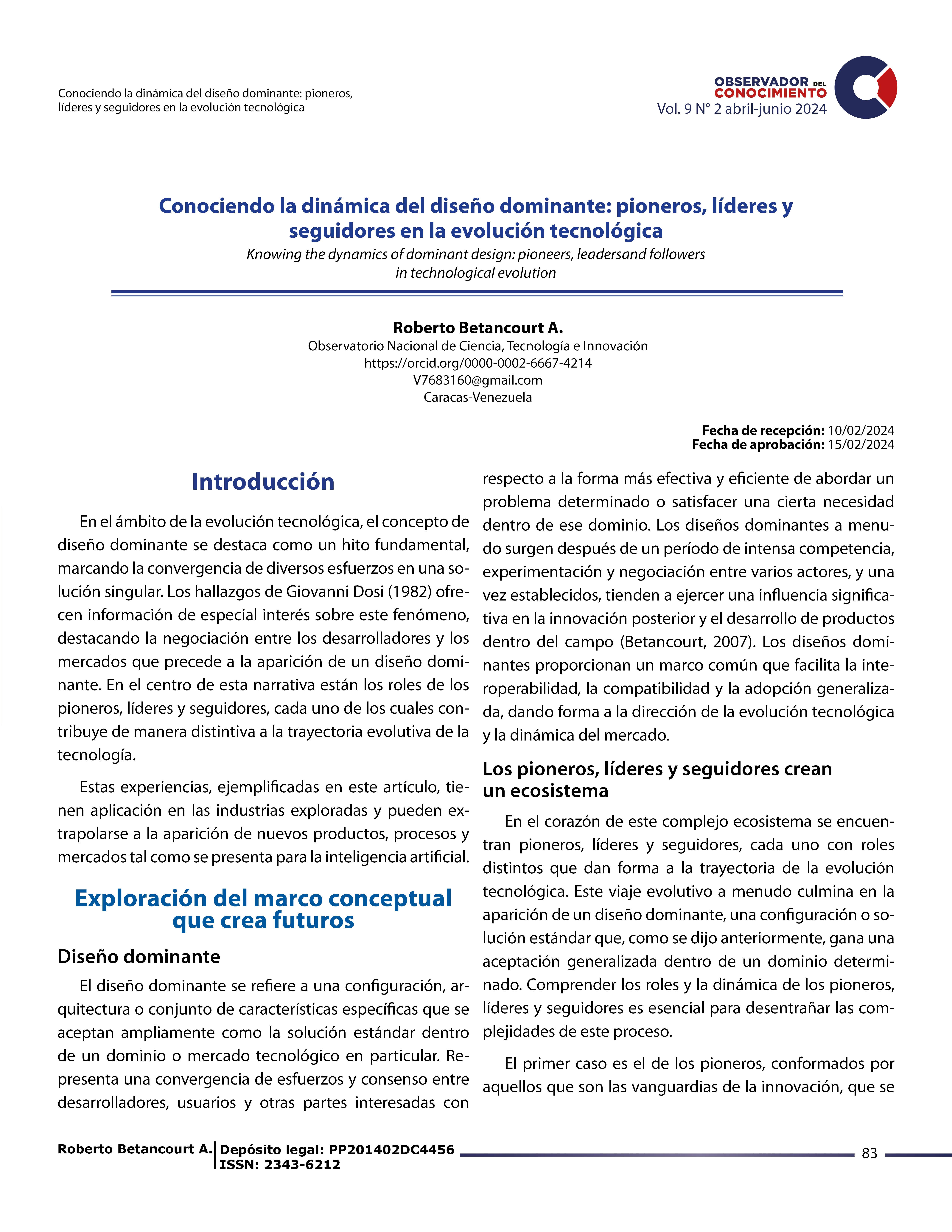Knowing the dynamics of dominant design: pioneers, leadersand followers in technological evolution
Downloads
References
-Dosi, G. (1982). Paradigmas tecnológicos y trayectorias
tecnológicas: A suggested interpretation of the determinants
and directions of technical change. Política de investigación
, N° 3: 147-162.
-Betancourt, R. (2007). Evolución de la tecnología y la aparición
del diseño dominante en la industria militar. Manchester:
Universidad de Manchester.
-Schumpeter, J. (1942). Capitalismo, socialismo y democracia.
Harper & Brothers.
-Tushman, M. y Philip A. (1986). Discontinuidades tecnológicas y
entornos organizativos. Administrative Science Quarterly 31, N°.
: 439-465.
-Christensen, C.; Michael E. y Rory M. (2015). ¿Qué es la
innovación disruptiva?. Harvard Business Review 93, N° 12
(2015): 44-53.
-Goodfellow, I.; Yoshua, B., y Aaron, C. (2016). Aprendizaje
profundo. MIT Press.
-Hinton, G. et al. (2020). Redes neuronales profundas para el
modelado acústico en el reconocimiento del habla: Las
opiniones compartidas de cuatro grupos de investigación. IEEE
Signal Processing Magazine, vol. 29, Nº 6, 2012, pp. 82-97.
-Jordan, M. y Tom, M. (2015) Aprendizaje automático: Trends,
Perspectives, and Prospects. Science, vol. 349, Nº 6245, pp.
-260.
-Instituto Global McKinsey (2018). Notas desde la frontera de
la IA: Modelando el impacto de la IA en la economía mundial.
McKinsey & Company.
-Silver, D. et al. (2018). Mastering Chess and Shogi by Self-Play
with a General Reinforcement Learning Algorithm”. Science,
Vol. 362, Nº 6419, pp. 1140-1144.
-West, D. et al. (2019) Hacia el liderazgo de la IA: Competir en
la nueva era de la innovación. Brookings Institution.

Downloads
Published
How to Cite
Issue
Section
License
Copyright (c) 2024 Roberto Betancourt A

This work is licensed under a Creative Commons Attribution-NoDerivatives 4.0 International License.







